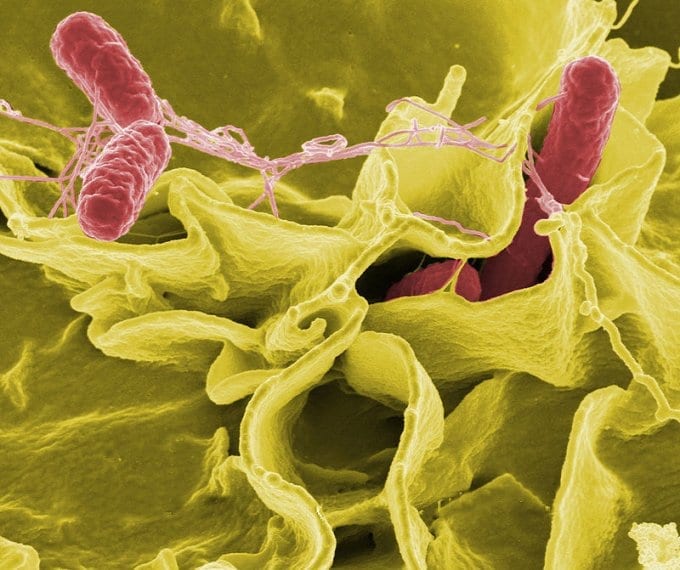
via University of Colorado Anschutz Medical Campus
Intense light can protect against lung damage in mice with implications for treating human disease. It’s also effective against cardiovascular disease
Intense light activates proteins shown to protect against lung damage in mice, a discovery that could have major therapeutic implications for treating acute lung injury in humans, according to a new study from researchers at the University of Colorado Anschutz Medical Campus.
“Acute lung injury has a mortality rate of 40%,” said the study’s lead author Tobias Eckle, M.D., professor of anesthesiology at the University of Colorado School of Medicine. “No specific therapy exists, and novel treatment options are needed.”
The study was published this week in the American Journal of Physiology’s Lung Cellular and Molecular Physiology.
Eckle’s team, which previously demonstrated that light can protect against cardiovascular disease, housed mice under intense rather than ambient light for seven days. This prompted a strong increase in the trough and peak levels of the pulmonary circadian rhythm protein – Period 2 or PER2.
If the protein was deleted in a specific lung cell known as the alveolar type 2 cell, acute lung injury was fatal. If the protein was not deleted, 85% of the mice survived. Alveolar type 2 cells have long been recognized as playing an important role during acute lung injury but have never been linked to the light regulated protein PER2.
The study also showed that intense light therapy reduced lung inflammation or improved the function of the alveolar barrier – the blood-air barrier – in lung infections. Researchers saw the same reaction when using the flavonoid, nobiletin, found in orange peel, which also enhances the amplitude of PER2.
At the same time, the researchers found that intense light stimulated production of the BPIFB1 protein, known to be anti-bacterial and secreted within the mucus membranes of the large airways. They believe this also likely plays a role in protecting the lungs.
Discovering that intense light can protect against lung damage, Eckle said, is important due to the lack of therapies currently available to treat the condition.
“If you develop lung injury there is essentially no good therapy left,” he said. “Our study has shown that intense light elicited lung-protective mechanisms could lead to new therapies even after the onset of acute lung injury in the future.”
Original Article: Intense Light Protects Against Lung Damage
More from: University of Colorado Anschutz Medical Campus
The Latest Updates from Bing News & Google News
Go deeper with Bing News on:
Intense light therapy
- Olivia Culpo Dissolves Lip Filler Ahead of Wedding to Christian McCaffrey
In a recent GRWM TikTok, Culpo stated that she has had Botox injections and fillers, but has "never had plastic surgery." She won't "judge anybody that has" though. Culpo and McCaffrey have been ...
- Red Light Therapy for Cell Growth - Why NASA Uses Red Light Therapy?
For decades, NASA has been involved in red light therapy research to improve the stay of their astronauts in space.
- Jennifer Aniston Shares Rare Glimpse Into Her Private World
Jennifer Aniston posted a slew of pics, sharing insight into her life with her pets, loved ones and day-to-day activities.
- How The Doppler Effect Can Help Us Navigate Intensity
When things are quiet, find moments to appreciate all that you’ve survived—and prepare yourself for that inevitable next loud noise.
- Best home ellipticals to tackle all of your fitness goals in 2024
Whether you’re looking for a high-end elliptical or a basic machine that will get you moving, this guide will help you to find the best home elliptical for you.
Go deeper with Google Headlines on:
Intense light therapy
[google_news title=”” keyword=”intense light therapy” num_posts=”5″ blurb_length=”0″ show_thumb=”left”]
Go deeper with Bing News on:
Acute lung injury
- SeaStar Medical gets $3.6 million NIH grant to study Selective Cytopheretic Device in adult patients with severe CHF
“We are encouraged by the NIH’s support and appreciate Dr. Humes and his team’s oversight of this trial while we pursue the SCD-ADULT’s approval in adult acute kidney injury and evaluate additional ...
- Progression of subtle CT abnormalities in smokers predicts acute respiratory disease
Smokers who have small abnormalities on their CT scans that grow over time have a greater likelihood of experiencing acute respiratory disease events, according to a new study published today in ...
- Research reveals the importance of phytocompounds and metabolomics analysis
Inflammatory bowel disease (IBD) is a common chronic gastrointestinal disorder and current treatment strategies can cause adverse effects. Thus, there is a need to identify alternative compounds to ...
- Lung abnormality progression linked to acute respiratory disease in smokers
Smokers who have small abnormalities on their CT scans that grow over time have a greater likelihood of experiencing acute respiratory disease events, according to a new study published in Radiology.
- Best Weed Pens of 2024: 6 THC Dab Pens for Relaxation
Acute Lung Injury: There have been cases of acute lung injury associated with contaminated or improperly used vape products. It’s worth noting that the effects of weed vapes can vary from person to ...
Go deeper with Google Headlines on:
Acute lung injury
[google_news title=”” keyword=”acute lung injury” num_posts=”5″ blurb_length=”0″ show_thumb=”left”]










